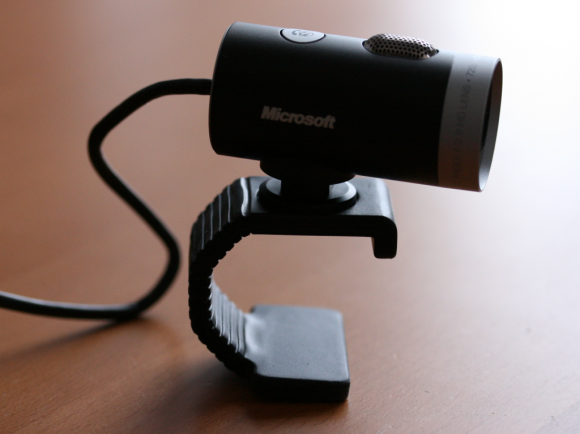Microsoft’s LifeCam Cinema is an compact HD webcam. It shoots at 720p HD (16:9, 30fps) and has a built-in microphone, making it a simple all-in-one solution that can be put on the top of any laptop screen or computer monitor. It even has a stand built in if you want to place it on a desk. The cam originally sold for $80 but can now be picked up for about $55.

The LifeCam uses a nice design that focuses on keeping things compact. It looks cool and is much less clunky than older webcams. The body is made of an aluminum barrel that is both attractive and sturdy. If the aluminum was used to make the cam rugged and portable then Microsoft should have included some sort of cap so that the glass could be protected when traveling, but nothing was included. The flexible stand is rubberized for improved grip and it works well with any display, from a deep 24-inch LCD to a laptop’s lid. The top of the cam is home to a button for taking photos and a digital microphone (with noise canceling technology).
I expected a standard plug-and-play installation but things weren’t so easy. One on test computer I got the normal plug-and-play response, with no installation necessary, aside from Windows 7 figuring out what sort of device it was. On a second Windows 7 system the cam tried to install the Microsoft LifeCam software, without me even putting in the included CD. I opted not to do this and some of my software (including Power Director) didn’t play nicely with the LifeCam. Yawcam had no problem working with it.
For testing purposes I gave Microsoft’s LifeCam software a try. It’s a standard webcam software with its main advantage being that it’s free and plays nicely with Windows Live Movie Maker. One thing I learned from this experience is how hardware intensive recording 720p video is–my notebook (Intel U7300, 4GB RAM, Win 7 64-bit) recorded video at 720p, but just barely. If you don’t have sufficient power the HD video recording will be useless to you, but you still be able to record to smaller resolutions (like 640×360) and take high resolution still images (Microsoft calls these 5x HD).
Here is a test video shot with the LifeCame Cinema (640×360) using Microsoft’s LifeCam software which saves it as a .wmv file:


